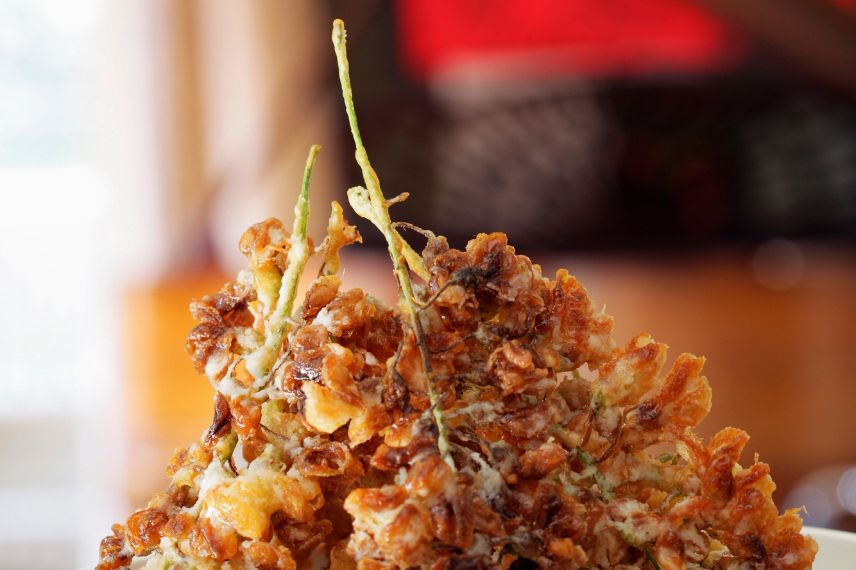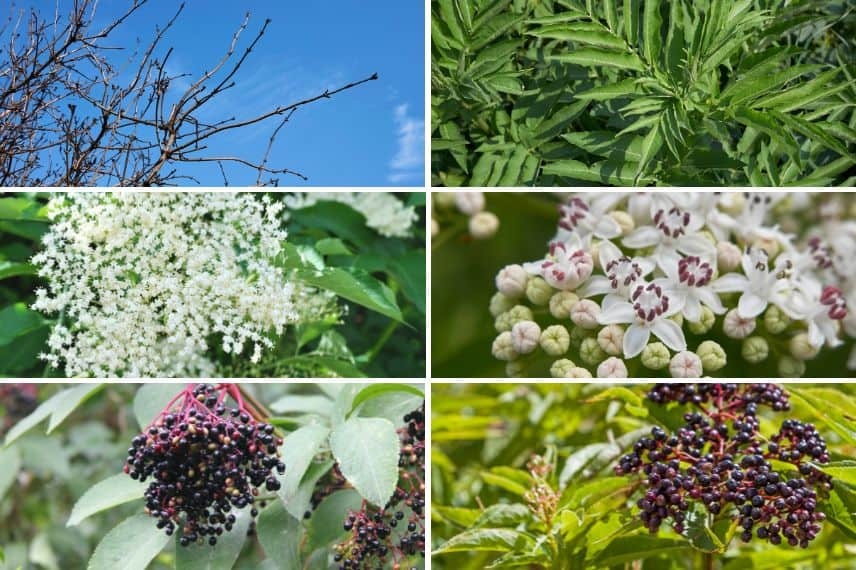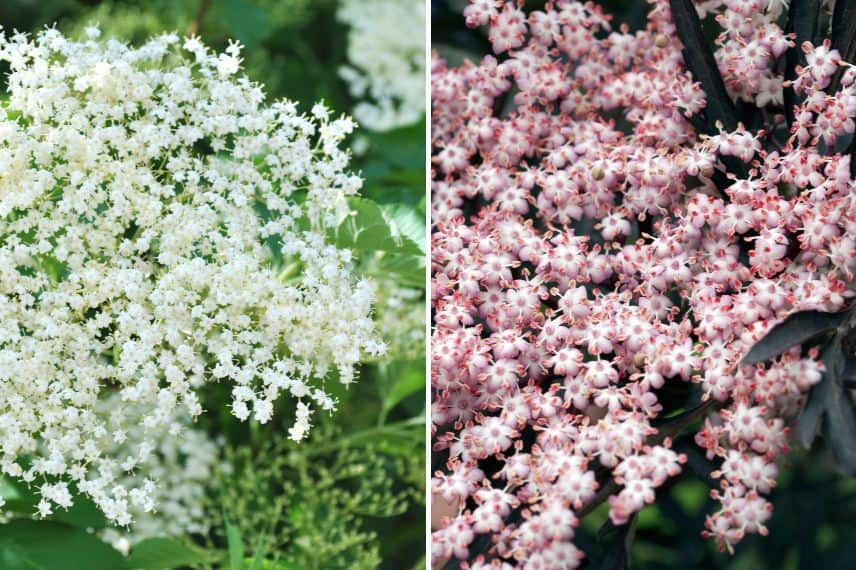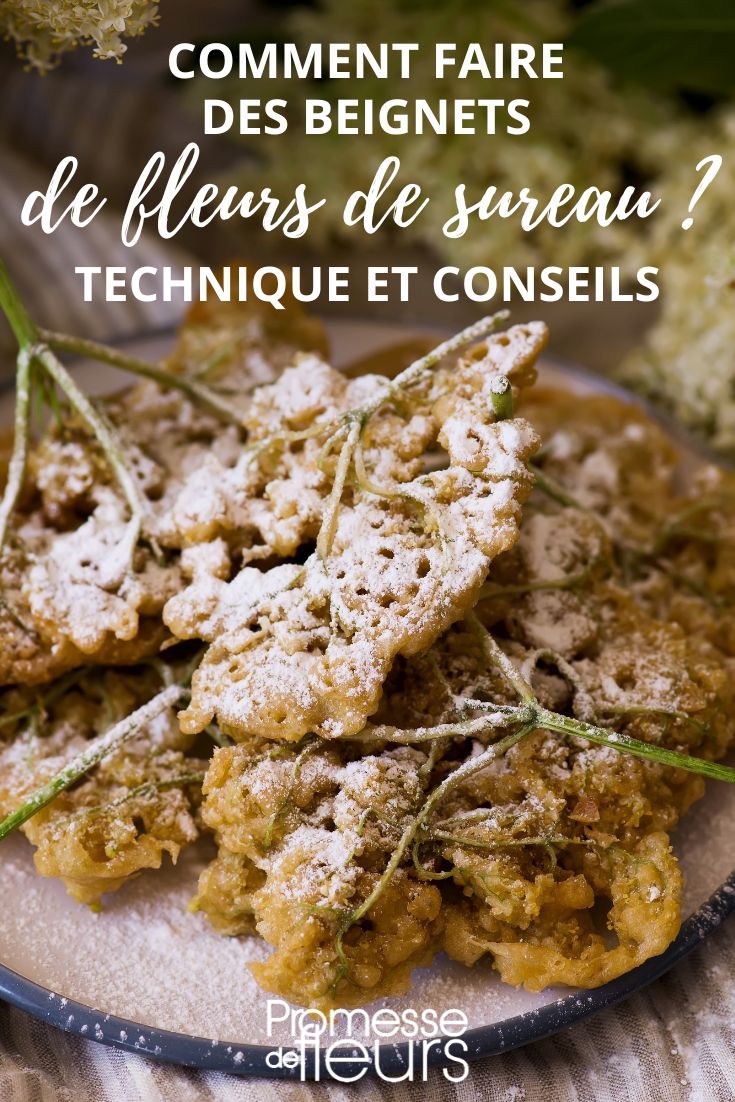Whether you have an elder (Sambucus) in your garden or often wander the countryside nearby, don't miss peak season for flowers of this robust, easy-to-grow bush. Especially as they're easy to spot since the fragrance of white corymbs is persistent, almost sweet. Once harvested, simply head to the kitchen to make a range of recipes, each more delicious than the last: syrup, lemonade, jellies and jams can indeed be made with elder flowers. But there's a standout, original recipe sure to win over all sweet-toothed: elderflower fritters.
Discover my recipe for these elderflower fritters to enjoy without restraint.
For more: Elder: planting, to grow and pruning

Distinguishing edible elder flowers
Common elder or black elder (Sambucus nigra) is found throughout territory as it grows naturally in countryside, in ditches and riverbanks, in natural hedgerows, in light woodland... but also in urban areas, in fallow land and wastelands, on verges. It's also easy to grow an elder in garden (where it sometimes appears unaided!) as it is a very easy-to-live bush or tree, hardy and vigorous, even invasive for species type. Nevertheless, today many ornamental horticultural varieties of elder are available which stay neatly where planted.
In any case, if you intend to use the flowers, favour bushes that grow well away from any sources of pollution such as major roads or fields under intensive cultivation.
Similarly, if you don't have an elder at home, exercise caution. The reputation of elder's toxicity still persists, but is partly incorrect. In fact, only one elder is toxic: danewort (Sambucus ebulus), because of its emetic and laxative properties. Therefore, it is essential to tell the difference between these two elders when in flower:
- Black elder is a bush at least 4–5 m tall, which can reach 10 m, with deciduous foliage, which means it retains its naked wood. Whereas danewort is a rhizomatous herbaceous plant that forms green stems that never become woody. The plant dies back completely in winter
- In terms of flowering, black elder bears white corymbs made up of small flowers with 5 stamens and 5 petals, just like danewort. Distinction is made at the level of the anthers, that is the terminal parts of the stamen that contain pollen. In danewort the anthers are pinkish, those of black elder are cream-white
- Clusters of red-black berries of danewort are held upright towards sky, whereas clusters of edible black elders lean and hang towards ground.

Harvesting elder flowers: when and how?
Flowers of common black elder are white. However, some horticultural varieties produce pink flowers:
- Sambucus nigra ‘Thundercloud’ produces pink to white umbels
- Sambucus nigra ‘Pulverulenta’ flowers in large, very foamy white umbels
- Sambucus nigra ‘Black Tower’ also offers pink umbels and very dark foliage
- Sambucus nigra ‘Black Beauty’ produces a very pink flowering
- Sambucus nigra ‘Black Lace’ yields pretty pink flowers in June and almost black purple foliage
Whether white or pink, flowers of black elders are harvested between late May and late June. This harvest period is also a way to distinguish common edible elder from toxic danewort. Flowers of danewort open later, from late June into July. It is preferable to pick elder flowers early in morning
When picking, elder flowers give off a strong, almost heady perfume evoking rose or lychee. Some varieties also give notes of citrus trees or raspberry. When shaken, a cloud of pollen rises.
To make elderflower fritters, it is essential to pick flowers with long peduncles. This detail matters when dipping into hot oil. If long, peduncles reduce risk of burns from splashes.

Fritter batter for 12 corymbs
- Put 130 g white flour in a mixing bowl and add two eggs, one tablespoon brown sugar, half a teaspoon baking powder, one small teaspoon olive oil and a pinch of salt. You can use 100 g flour and 30 g cornflour instead
- Mix all ingredients
- Slowly fold in 1/4 litre sparkling water while stirring to avoid lumps and obtain a smooth, sufficiently loose batter, like pancake batter
- To flavour batter, you can add zest of lime or a little rum
- Let batter rest at least half an hour.
Cooking elderflower fritters

As a rule, elder flowers are not washed. Simply shake them vigorously to dislodge any insects that may be hiding. However, you can rinse them under tap water, but you must dry them carefully on kitchen roll or a clean tea towel to avoid splashes during cooking. Meanwhile, heat 2 cm sunflower oil in a pan until it shivers or heat fryer to 180 °C.
Then take flowers by stem and dip into batter.
Allow flowers to drain slightly to remove excess batter and immediately dip into hot oil.
Fritters are cooked when they turn a light brown colour.
Remove them from pan or fryer and place on kitchen paper.
Serve fritters hot, sprinkled with demerara sugar, accompanied by fruit salad or a scoop of ice cream
































Comments